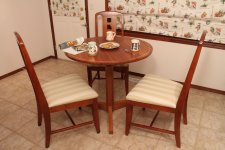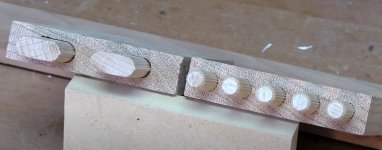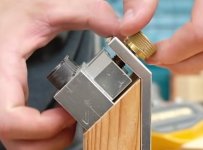jaguar36
Member
- Joined
- Jul 19, 2011
- Messages
- 288
I'm putting together a full review of the Domino. One of the things I was curious about was how strong the joints actually were. So I built a simple test rig to measure the strength of the joint, and compared it to just a plane butt joint and to pocket screws. The rig is meant to simulate a face frame, as thats one area where I've used Dominos in the past that would be easy to test and where you could use a number of different joinery methods. I used 5x30mm Dominos in 3/4" cherry for the test.
I was surprised to find that while the Domino did double the strength of the joint compared to just a butt joint, the pocket screws were 50% stronger than the Domino. One commenter did point out that if strength was a major concern a longer Domino could be used, and that's a good point. I've got some 6x40mm Dominos laying around so I'll try that out. Still I was rather disappointed in the Domino as I thought it would be just as strong if not stronger than the pocket screws.
Here's the video I made of the test:
I was surprised to find that while the Domino did double the strength of the joint compared to just a butt joint, the pocket screws were 50% stronger than the Domino. One commenter did point out that if strength was a major concern a longer Domino could be used, and that's a good point. I've got some 6x40mm Dominos laying around so I'll try that out. Still I was rather disappointed in the Domino as I thought it would be just as strong if not stronger than the pocket screws.
Here's the video I made of the test:




